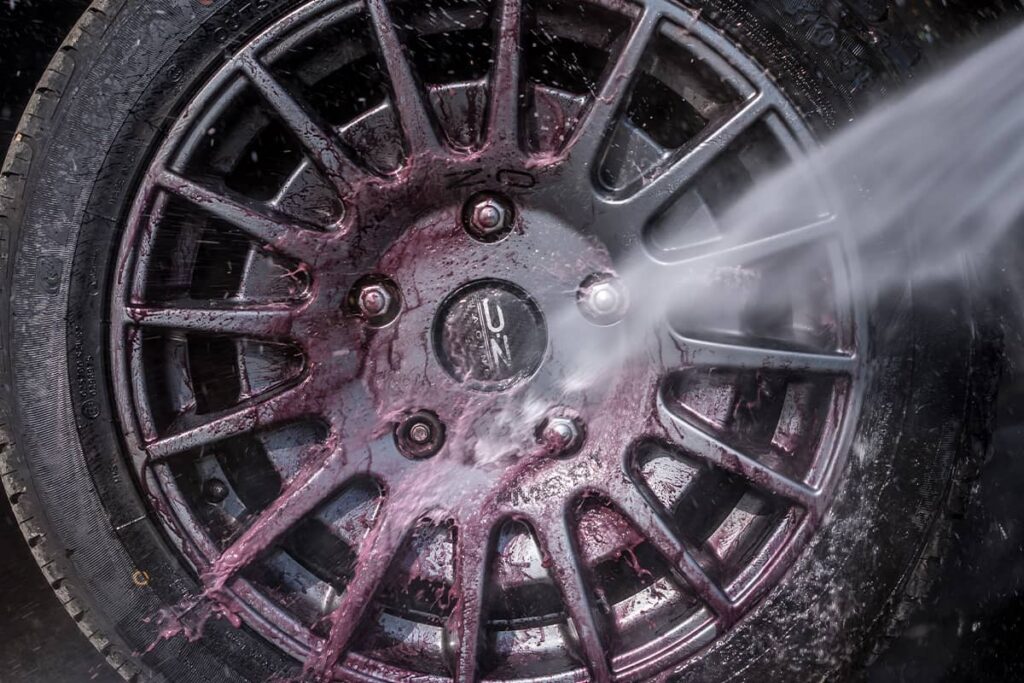Excessive Brake Dust On Both Front Wheels

Alright, gearheads, let's talk about something that plagues nearly every car owner at some point: excessive brake dust. But we're not just talking a light coating – we're diving into the annoying scenario where both front wheels are consistently coated in a thick layer of black grime far quicker than the rears. It's a problem that can make even the cleanest ride look neglected and, more importantly, can hint at underlying issues.
Why the Fronts, Though?
The simple answer is: brake bias. Most cars are designed with a front-biased braking system. This means the front brakes handle a larger percentage of the stopping force, usually around 60-70%. This is due to weight transfer under braking – the car's momentum shifts forward, increasing grip on the front tires and reducing it on the rear. Distributing more braking power to the front allows for shorter stopping distances and improved stability. Thus, more work equals more dust.
But Excessive? Time to Investigate
While some front brake dust is normal, excessive amounts warrant investigation. Several factors contribute, and they can vary wildly depending on the vehicle. Let's break down some common culprits, focusing on different models and technologies:
Brake Pad Composition: The Prime Suspect
The type of brake pad material significantly impacts dust generation. Here's a quick rundown:
- Organic/Non-Metallic: Usually the cheapest option, producing a moderate amount of dust. Softer material means less rotor wear, but also less performance and higher wear rates.
- Semi-Metallic: A common blend offering a good balance of performance, wear, and dust. Contains metal fibers, which are a major contributor to brake dust.
- Ceramic: Known for their low-dust properties and quiet operation. They generally provide good performance and rotor life but can be more expensive.
- Performance/Track Pads: Designed for high-performance braking, often at the expense of everything else. Expect significant dust, noise, and potentially accelerated rotor wear.
Real-World Driving Impressions: Consider a 2020 Honda Civic. The base model with OEM organic pads will produce a noticeable amount of dust. Now compare that to a 2020 Civic Type R, which comes standard with more aggressive semi-metallic pads. The Type R will create considerably more dust, even under similar driving conditions.
Sticking Calipers: A Hidden Drain
A sticking caliper piston or slide pins can cause the brake pads to drag against the rotor even when the brake pedal is not depressed. This constant friction generates excessive heat and, you guessed it, tons of dust.
Model Differences: Cars with complex multi-piston calipers (like many high-performance Audis or BMWs) can be more prone to sticking calipers if not properly maintained. The tight tolerances and multiple moving parts leave more room for corrosion and debris buildup.
Rotor Material: The Underdog
While pads are the primary dust producers, the rotor material plays a role. Softer rotor materials wear faster, contributing to overall dust accumulation.
Spec Table: Rotor Material & Dust Level (Hypothetical)
| Rotor Material | Dust Level | Wear Rate | Cost |
|---|---|---|---|
| Standard Iron | Moderate | Moderate | Low |
| Drilled & Slotted Iron | Moderate-High | Moderate | Moderate |
| Carbon Ceramic | Low-Moderate | Very Low | High |
Driving Impression: A car with standard iron rotors and semi-metallic pads driven aggressively will likely show significant front brake dust. Upgrading to slotted rotors might improve braking performance slightly but will probably increase dust generation too due to the increased friction. Carbon ceramic rotors dramatically reduce dust but come with a hefty price tag.
Technology and Driving Style
Modern technologies can also contribute. Cars equipped with aggressive regenerative braking systems (common in hybrids and EVs) tend to utilize the front brakes more frequently, especially in stop-and-go traffic. This can lead to increased dust, even if the pads themselves are low-dust formulations.
Driving Style: Finally, your driving style plays a major role. Frequent hard braking will always generate more dust than gentle, anticipatory driving.
Diagnosis and Solutions
If you suspect excessive brake dust, start by visually inspecting the calipers for signs of sticking. Check the pad thickness and rotor condition. Consider upgrading to low-dust ceramic pads. Ensure your brakes are properly maintained and lubricated. Regular cleaning can also help prevent dust buildup and make it easier to spot potential problems.
Pros and Cons: Ceramic Pads
- Pros:
- Significantly reduced brake dust
- Quieter operation
- Good overall performance
- Longer pad life (generally)
- Cons:
- Higher initial cost
- May not offer the same extreme stopping power as performance pads
- Can be harder on rotors in some cases
In summary, excessive front brake dust is often a combination of factors, from pad composition and caliper health to driving style and vehicle technology. Understanding these elements will help you diagnose the issue and find the right solution to keep your wheels clean and your brakes performing optimally.
Fun Note: So, what's worse: brake dust or swirl marks? Let the debate begin!
